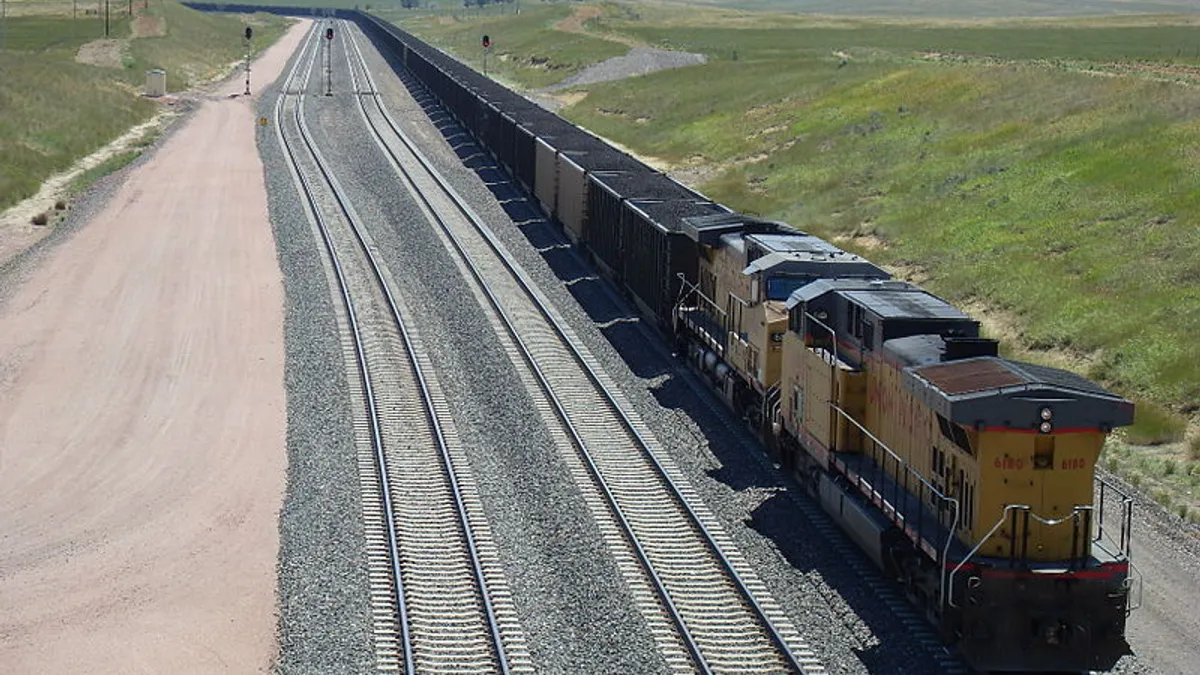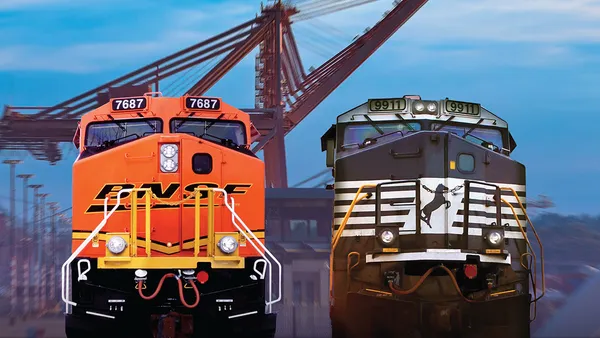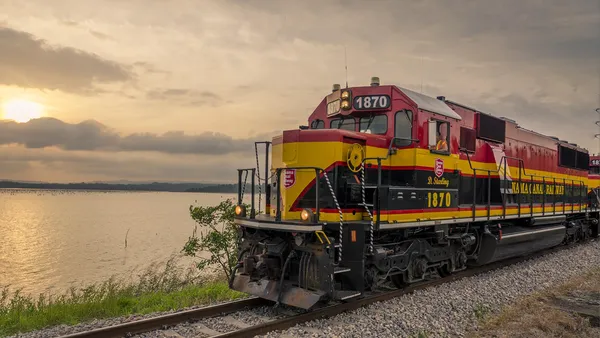Dive Brief:
- Union Pacific Railroad will reopen 58 interline service lanes with CSX and Norfolk Southern beginning Feb. 1, the railroad informed customers Monday.
- The railroad said the decision was "a result of Union Pacific's Unified Plan 2020, and our objective of providing safe and reliable service products." The lanes were originally cut in 2018 in accordance with the same plan, which is Union Pacific's version of precision-scheduled railroading (PSR).
- Union Pacific's intermodal revenue was down 6% year-over-year for in 2019. The pull of a loose trucking market is expected to subside mid-year 2020, CEO Lance Fritz said on the earnings call accompanying fourth-quarter earnings release on Jan. 23.
Dive Insight:
Total intermodal volume for U.S. railroads as a whole was down 5.1% year-over-year in 2019, according to the Association of America Railroads — so Union Pacific saw a larger decrease than the industry.
BNSF, Union Pacific's closest competitor for much of its business, has not yet released full-2019 figures and does not report a figure for its entire intermodal franchise, but reported consumer products volume down 4% year-over-year for the first nine months of 2019. Still, as the other Class I's have been streamlining, BNSF has been building its network and resisting the pull of PSR.
Describing BNSF's possible advantage in the age of PSR, rail consultant Tony Hatch told Supply Chain Dive in 2019, "The fear is that by adopting PSR you compromise your unbalanced but good operation and thereby give up growth potential in intermodal, for example."
Union Pacific's move to reopen closed lanes indicates the railroad sees a possible benefit in offering more service options — reversing some of its earlier rationalization work. Hatch told Supply Chain Dive Wednesday the Canadian railroads, years ahead of U.S. competitors in their PSR journeys, similarly restored some of the intermodal schedules they had cut.
For the Class I railroads adopting the principles of PSR (six out of seven), the overarching strategy is to make more profit by doing less. Cutting intermodal lanes specifically has been a popular method of doing so, as intermodal service is more labor-intensive and railroads also seek to do less, with fewer people.
Though shedding lanes has led to rancor from customers, executives hold that improved reliability of the services that remain will keep customers coming back and eventually increase business by converting freight from the highways to the rails. So far, that hope has not come to pass.
This story was updated to include new comments from Tony Hatch.














